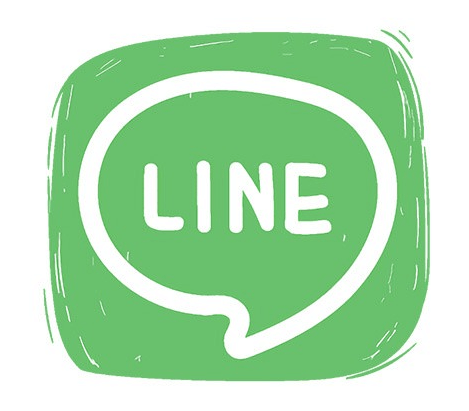Line Haul Trucking Jobs: Your Comprehensive Guide to a Vital Career on the Road sale.truckstrend.com
In the vast ecosystem of modern commerce, few roles are as foundational yet often overlooked as that of the line haul truck driver. These dedicated professionals are the unsung heroes who ensure that goods, from consumer electronics to vital medical supplies, traverse vast distances across continents, connecting manufacturers to distribution centers and ultimately, to the consumers who depend on them. Line haul trucking jobs are the backbone of the long-distance freight industry, offering a unique blend of challenge, independence, and significant earning potential for those ready to embrace life on the open road.
This article serves as a comprehensive guide for anyone considering a career in line haul trucking. We will delve into what defines this critical role, explore its daily realities, highlight its myriad benefits, address potential challenges, and provide actionable insights for aspiring drivers to navigate their path into this rewarding profession.
Line Haul Trucking Jobs: Your Comprehensive Guide to a Vital Career on the Road
What Exactly is Line Haul Trucking?
At its core, line haul trucking refers to the long-distance transportation of freight between major distribution hubs, terminals, or cities. Unlike local or regional trucking, which involves shorter routes and frequent stops, line haul drivers typically operate over hundreds or even thousands of miles, often driving overnight or for extended periods to meet tight schedules.
The defining characteristic of line haul is its focus on efficiency and speed in moving large volumes of goods from point A to point B, often directly without intermediate stops. Drivers typically pick up a pre-loaded trailer at one terminal and drop it off at another, with minimal involvement in the actual loading or unloading of freight. This "drop-and-hook" model is a hallmark of line haul operations, distinguishing it from less-than-truckload (LTL) or full-truckload (FTL) jobs that might require more hands-on freight management.
Line haul routes are often consistent, meaning drivers might run the same routes repeatedly, fostering a sense of predictability rarely found in other long-haul sectors. This consistency is crucial for optimizing logistics and ensuring the timely delivery of goods across the nation’s supply chains.
The Daily Life of a Line Haul Driver
The typical day for a line haul driver differs significantly from other trucking roles. While long hours are inherent to long-haul driving, the nature of line haul often translates to less physical labor and more pure driving time.
- Pre-Trip Inspection: Every day begins with a thorough inspection of the truck and trailer to ensure safety and compliance.
- Pick-up: Drivers typically arrive at a company terminal or major distribution center, hook up to a pre-loaded trailer, and receive their dispatch instructions.
- On the Road: The majority of the day is spent driving. Line haul routes are designed for maximum efficiency, often utilizing interstates and major highways to cover vast distances quickly. Drivers meticulously manage their hours of service (HOS) using Electronic Logging Devices (ELDs) to ensure compliance with federal regulations.
- Breaks and Rest: Mandated breaks and rest periods are taken at truck stops or designated rest areas. While these offer opportunities for meals and stretching, drivers are always mindful of their schedule.
- Drop-off: Upon reaching the destination terminal, the driver drops the loaded trailer and may pick up an empty one, or another loaded trailer for a return trip, or head to a layover spot for their required rest period.
- Less Physical Labor: A significant advantage is the minimal involvement in loading or unloading. Freight is typically handled by dockworkers, allowing drivers to focus on what they do best: driving.
![]()
While the job demands significant time away from home, the predictable nature of many line haul routes often allows for more consistent home time compared to general over-the-road (OTR) positions, with many drivers managing to be home on weekends or specific days.
Why Choose Line Haul? Benefits and Advantages
Line haul trucking offers a compelling career path with several distinct advantages:
- Higher Earning Potential: Line haul drivers often earn more than their counterparts in local or regional trucking due to the higher mileage accumulated and the critical nature of their routes. Pay is typically per mile, and with consistent long hauls, the miles add up quickly.
- Predictable Routes and Schedules: While not always guaranteed, many line haul operations involve dedicated routes, leading to more predictable schedules and potentially more consistent home time than general OTR driving. This predictability allows for better life planning.
- Less Physical Strain: The "drop-and-hook" model minimizes the need for drivers to physically load or unload freight, reducing the risk of injuries associated with manual labor. This can extend a driver’s career longevity.
- Focus on Driving: For those who genuinely enjoy the act of driving and the solitude of the open road, line haul offers an ideal environment. It allows drivers to hone their skills and focus on safe, efficient transportation.
- Job Security and Stability: The demand for experienced line haul drivers remains consistently high, making it a secure career choice with excellent long-term prospects, especially with the continued growth of e-commerce and global supply chains.
- Independence: While part of a larger logistics network, drivers operate largely independently on the road, managing their time and responsibilities without constant direct supervision.

Challenges and How to Overcome Them
Like any demanding profession, line haul trucking comes with its unique set of challenges:
- Time Away from Home: This is arguably the biggest challenge. Weeks on the road can strain personal relationships. Solution: Maintain open communication with family, schedule regular video calls, and maximize quality time during home breaks. Choose companies with home-time policies that align with your needs.
- Monotony and Fatigue: Long hours of driving can be mentally taxing. Solution: Vary your routine, listen to audiobooks or podcasts, take regular short breaks to stretch and walk, and prioritize adequate rest during layovers.
- Health and Wellness: Sedentary lifestyle and irregular eating habits can impact health. Solution: Pack healthy snacks, utilize truck stop gyms or walking paths, prioritize sleep, and stay hydrated. Many drivers invest in portable cooking equipment to prepare healthier meals.
- Weather and Road Conditions: Drivers must contend with adverse weather, traffic, and road closures. Solution: Stay updated with weather forecasts and traffic reports, learn defensive driving techniques, and know when to safely pull over and wait out severe conditions.
- Regulatory Compliance: Strict Hours of Service (HOS) rules and other regulations must be followed meticulously. Solution: Thoroughly understand ELD operation and HOS rules, plan routes carefully to avoid violations, and prioritize safety over speed.
- Mechanical Issues: Breakdowns can happen. Solution: Perform diligent pre-trip inspections, learn basic troubleshooting, and ensure your company has a reliable breakdown support system.
How to Get Started in Line Haul Trucking
Embarking on a career in line haul trucking requires dedication and proper preparation. Here’s a step-by-step guide:
- Obtain a Commercial Driver’s License (CDL) Class A: This is the fundamental requirement. You’ll need to pass written knowledge tests and a comprehensive driving skills test.
- Attend a Reputable Truck Driving School: While not always legally mandated, attending a CDL training program significantly increases your chances of passing the CDL test and provides essential practical skills. Programs typically last 3-8 weeks.
- Gain Endorsements: For line haul, especially for larger carriers, a Doubles/Triples (T) endorsement is often required or highly recommended, as line haul frequently involves pulling multiple trailers. A HazMat (H) endorsement can also broaden job opportunities and potentially increase pay.
- Secure Your First Job: Many trucking companies offer entry-level positions or company-sponsored training programs for new CDL holders. Look for companies that specialize in line haul or have a dedicated line haul division. Some companies may require a certain amount of OTR experience before transitioning into pure line haul.
- Maintain a Clean Driving Record: A clean driving record is paramount for employment and insurance purposes. Any traffic violations or accidents can hinder your career progression.
- Pass Background Checks and Drug Tests: All trucking companies conduct thorough background checks and require pre-employment and random drug and alcohol testing.
Key Considerations for Aspiring Line Haul Drivers
When evaluating potential employers, keep these factors in mind:
- Company Culture and Size: Large carriers often have more structured routes and benefits, while smaller companies might offer a more personalized experience.
- Pay Structure: Understand how you’ll be paid (per mile, percentage of load, hourly). Inquire about detention pay, layover pay, and accessorial pay.
- Benefits Package: Look for comprehensive health insurance, dental, vision, 401(k) or other retirement plans, and paid time off.
- Equipment: The age and maintenance of the company’s fleet are crucial for comfort, safety, and reliability.
- Home Time Policy: This is a deal-breaker for many. Clarify how often you’ll be home and if it’s guaranteed.
- Route Types: Are routes dedicated (same route regularly) or irregular (varied destinations)? Dedicated routes often offer more predictability.
Tips for Success on the Road
- Master Your Hours of Service (HOS): Understanding and adhering to HOS rules is critical for safety and compliance.
- Prioritize Safety: Always put safety first, both yours and others’. Drive defensively, perform thorough inspections, and don’t take unnecessary risks.
- Maintain Your Truck: While not your property, treating the truck with care and promptly reporting maintenance issues is vital.
- Stay Connected: Use technology to stay in touch with family and friends.
- Manage Finances Wisely: Budget for expenses on the road and save for the future.
- Professionalism: Represent yourself and your company well. Good communication skills with dispatchers and fellow drivers are invaluable.
- Invest in Comfort: A comfortable mattress, good quality sleep aids, and personal items can make life on the road much more pleasant.
Typical Earnings and Associated Costs for Line Haul Trucking Jobs
Understanding the financial landscape is crucial when considering a line haul trucking career. While earning potential is high, there are initial investments and ongoing expenses to consider.
| Category | Description




